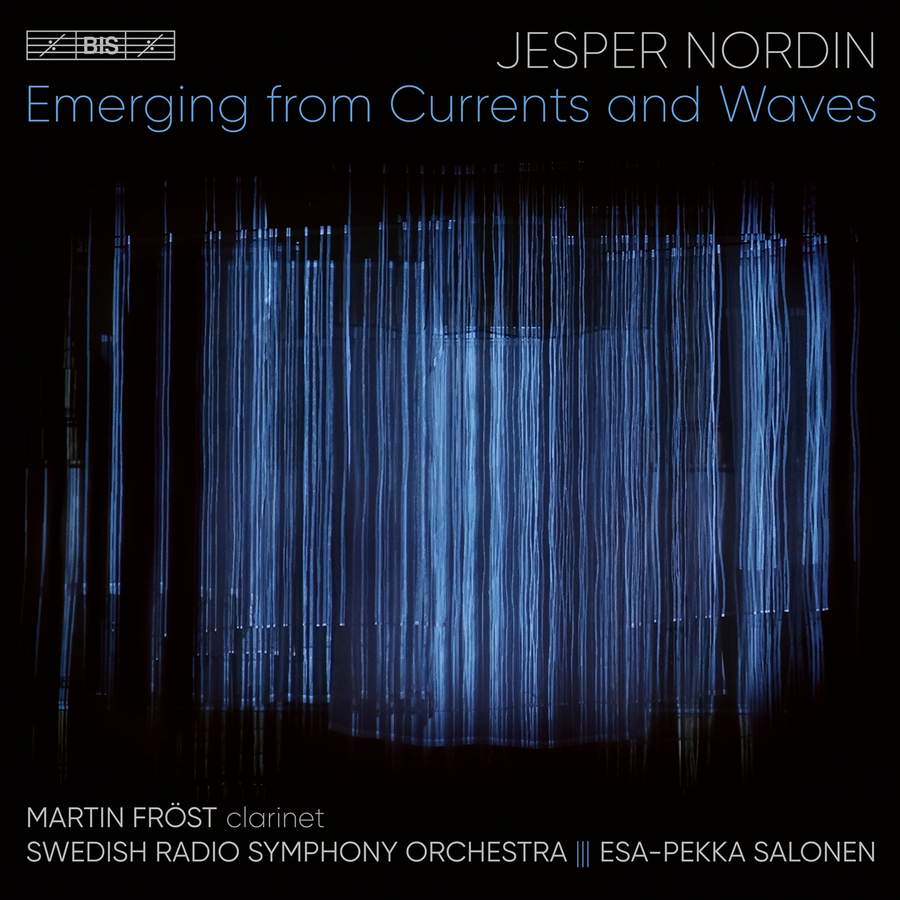NORDIN Emerging from Currents and Waves
View record and artist detailsRecord and Artist Details
Genre:
Orchestral
Label: BIS
Magazine Review Date: 10/2022
Media Format: Super Audio CD
Media Runtime: 70
Mastering:
DDD
Catalogue Number: BIS2559

Tracks:
| Composition | Artist Credit |
|---|---|
| Emerging from Currents and Waves |
Jesper Nordin, Composer
Esa-Pekka Salonen, Conductor Martin Fröst, Clarinet Swedish Radio Symphony Orchestra |
Author: Andrew Mellor
Here is plenty to occupy those prone to speculating on the future of orchestral music. Swedish composer Jesper Nordin (not to be confused with the Danish conductor of the same name) has created a work for which it’s hard to think of a precedent: a clarinet concerto embedded into a larger piece (surrounded by what could clumsily be described as a prelude and an epilogue, though together they are longer than the three-movement concerto they enshrine) that makes use of a self-developed technology by which soloist Martin Fröst and conductor Esa-Pekka Salonen ‘play’ live electronics in real time. Thus no two performances of Emerging from Currents and Waves can ever be the same – apart from the re-playable one captured here.
In basic terms, Salonen can record, play back and freeze bits of the orchestra he is conducting while he is conducting it. Fröst, equally, also makes use of a gesture instrument or ‘gestrument’ in addition to his own clarinet – a movement-sensitive device that marshals a separate flock of 16 sampled clarinets just as Salonen’s gestrument can the live-recorded orchestra.
In each case, the electronic elements are mined from the very material the acoustic orchestra is playing live. So you never feel as though the electronics are an add-on, which is the work’s key strength and the technique’s biggest potential. The orchestra seems suddenly more immersive, overwhelming and dynamic while never not sounding like an orchestra. The gestrument clarinets resound in a manner that springs off the idea of a soloist letting loose in a cadenza, while the conductor’s gestrument allows him to whip it into instantaneous, trippy little gestures that boggle the ear.
The question, then, is whether the means trample on the ends – whether the work makes an irrelevance of all that technical wizardry and stands alone, even for those who don’t know how it was built. On that point, my personal inner jury is still out. Some of the big, tapestry-like structures aren’t possessed of the constantly beguiling qualities of large structures from, let’s say, Anna Thorvaldsdottir, while there is some sense that without the single-mindedness of a composer specifying exactly what should be played and how, the music can seem a little generalised and directionless.
Then again, perhaps therein lies the immersive quality that comes across no-holds-barred. There are sounds to marvel at here, not least the glassy, fluid first taste of the gestrument clarinets in the first movement of the concerto and, elsewhere, the haunting sounds of brass-like lurs, reverberating in their echo chambers. Either way, Nordin has hit upon a technique and a device – or at least refined them from various precedents – that have huge potential.
Discover the world's largest classical music catalogue with Presto Music.

Gramophone Digital Club
- Digital Edition
- Digital Archive
- Reviews Database
- Full website access
From £8.75 / month
Subscribe
Gramophone Full Club
- Print Edition
- Digital Edition
- Digital Archive
- Reviews Database
- Full website access
From £11.00 / month
Subscribe
If you are a library, university or other organisation that would be interested in an institutional subscription to Gramophone please click here for further information.




